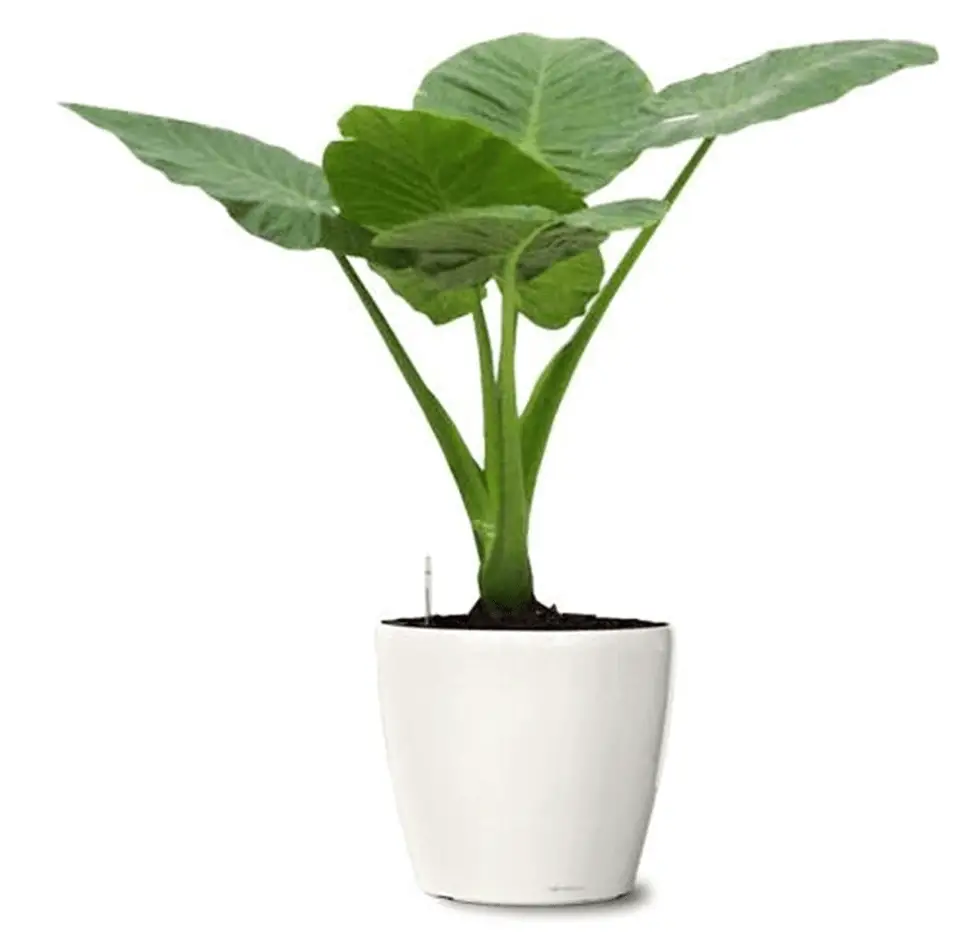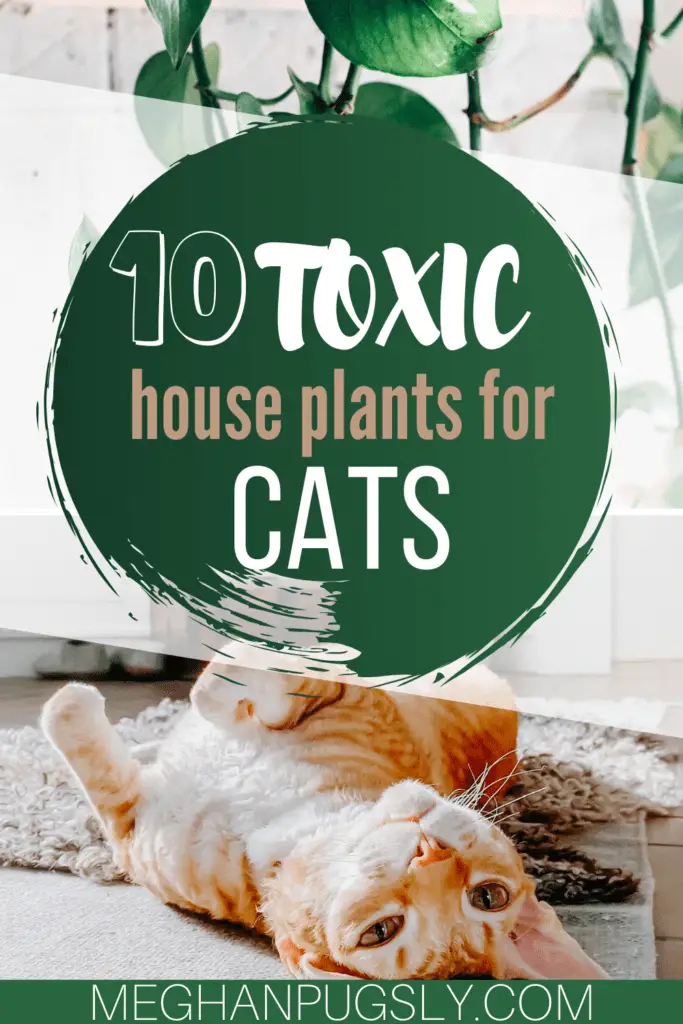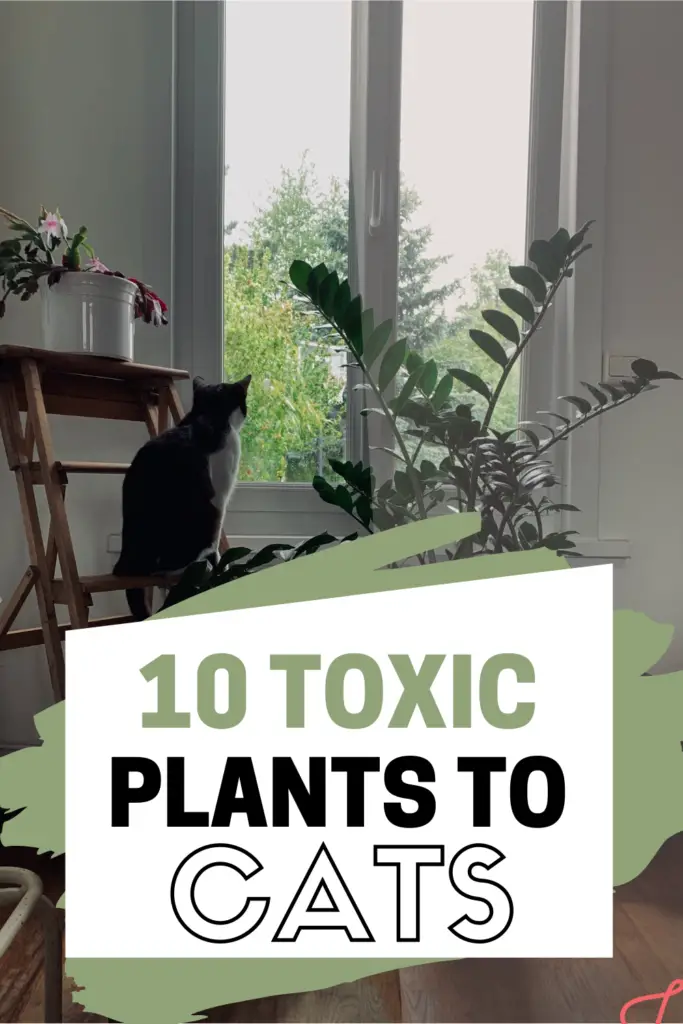
Houseplants are a popular addition in millions of homes across the globe. Some enjoy them for their air-purifying qualities, and other’s simply for the beauty they bring. Indoor hours plants have been proven to help reduce depression and anxiety, and many also find caring for them to be calming and therapeutic. I have tons of plants in my house now and I have noticed a huge decrease in my anxiety and depression since I got them. Unfortunately, I also have three cats and I found out that not all indoor plants are safe for cats. If you have cats, there are a few houseplants you will want to avoid bringing into your home because of their toxic properties. Here is a list of 10 popular houseplants that are toxic to cats so you can avoid hurting your beloved furry friends.
For those of you who don’t have cats and love plants, or are going to hang the plants away from your cats, I have included a Shop This Plant portion to the ones I’ve purchased from Amazon.
On this list, my favorites are the Aloe, Peace Lily, Pothos (Devils Ivy), Dumb Cane and Corn Plant. But KEEP IN MIND, you MUST be cautious. If you have curious kittys who eat plants, only get hanging plants like the Aloe, Peace Lily, and Pothos. My cats don’t bother my plants EXCEPT the ones on the desk which I make sure are NON-TOXIC plants.
1. Aloe Vera

Aloe Vera is commonly found in homes due to the medical properties of the gel in their leaves. Aloe Vera is used topically for burns as an ointment and is also digestible to help cute stomach ailments, oral health to clear plague, and can be used to help clear acne among other things. Aloe Vera is characterized by big thick succulent-like leaves with jagged edges. Aloe Vera leaves grow upwards from the base.
While Aloe may have therapeutic properties for humans, it is toxic to cats and can cause lethargy, vomiting, and diarrhea if ingested. Aloe has so many incredible uses for pet parents, it’s no wonder it is such a popular plant pick. But when it comes to exposing it to your pets, you may want to think twice. There are no known reports of the aloe posing a threat when applied topically, but if they happen to chew on the plant it will likely irritate their digestive system.
Symptoms of Aloe Vera poisoning in cats: vomiting, diarrhea, and tremors.
- Toxic Properties: Saponins, anthraquinones
2. Dumb Cane

Shop This Plant – (Note) You May be able to find cheaper in your local Home Depot or Lowes, but be sure the roots are not dried and there are no mealy bugs on it. Lots of my plants from Lowes have had mealy bugs from the soil.
Dumb Cane, or Dieffenbachias, is one of my favorite house plants. It’s also one of the most popular because of its big, beautiful, tropical foliage and the fact that it’s low-maintenance to care for. There are many different varieties of dumb cane, ranging in heights from a few feet high to over 10 feet if grown in the right conditions. The foliage also varies between the varieties of dumb cane. Unfortunately, even though these indoor plants are gorgeous and make amazing floor plants, they’re highly toxic to cats when ingested. Humans can also experience a mild irritant from its sap if it touches their bare skin, so be careful when handling dumb cane.
Symptoms of Dumb Cane poisoning in cats: oral irritation, burning fo the mouth, vomiting, swelling, and in severe cases, even difficulty swallowing or breathing.
- Toxic Properties: Insoluble calcium oxalates, proteolytic enzyme
3. Pothos

Shop This Plant – 6 Inch
Shop This Plant – 4 Inch
Pothos is my absolute favorite indoor plant. It’s low maintenance and hangs or can crawl up if you help it out just a little bit. Due to it being low maintenance, it’s grown in popularity over the years as an easy to maintain house plant for either amateur or experienced plant owners. This plant is a great way to bring some color into your home and spruce it up on a budget. For those of you that simply can’t stand not having a pothos like myself but also want to keep your kitty safe, don’t fret.
You can hang these beautiful plants from the ceiling away from anything for the cat to climb on to get near it and trim it when it starts to trail too low. I have at least 8 pothos spread throughout my house where my 3 cats can’t get to them but I can still enjoy their beautiful color. Pothos are safe to the touch, but your kitty can get sick if they ingest it. g
Symptoms of Pothos poisoning in cats: burning of the lips and mouth, oral swelling, and vomiting
- Toxic Properties: Insoluble calcium oxalates
4. Jade Plant

Shop This Plant – 6 Inch Plant
Shop This Plant – 4 Inch Plant
Jade Plant is a rubber plant that’s great for those without a green thumb. It’s known for being a plant that’s “hard to kill”, which is great for beginner planters. Jade plants are an easy to grow succulent plant that comes in a lot of varieties and is awesome for homeowners that forget to water their plants. However, although a beautiful plant that’s easy to maintain, it’s unsafe for animals.
Symptoms of Jade Plant poisoning in cats: vomiting and a slow heart rate.
- Toxic Properties: Unknown
5. Sago Palm

Shop This Plant in your local nursery if you have one. If not, you can check out Lowes or Home Depot. (If you like this style but are worried about your kitty, get a Majesty Palm – Here as they’re not toxic to cats).
Sago Palms are beautiful, exotic, and tropical plant that brings a fun and tropical feel into your home. It’s great for indoor air quality and can be used as a wonderful accent piece. Although I absolutely love these plants, they’re very toxic to my furry kids. Every part of the sago palm is toxic to animals; from the seeds to the leaves.
Symptoms of Sago Palm poisoning in cats: diarrhea, vomiting, and even liver failure and death.
- Toxic Properties: Cycasin
6. Corn Plant

Shop This Plant – 6 in. Pot
Corn plants are a lovely, bright, green, and yellow indoor plant that’s extremely popular in homes across the world. It’s easy to care for and great at removing toxins in the air. However, for animal lovers, this plant can be a problem if ingested.
Symptoms of Corn Plant poisoning to cats: hyper-salivation, appetite loss, vomiting, and general GI upset. It can also cause issues with an increased heart rate and breathing.
- Toxic Properties: Saponin
7. Peace Lily

Shop This Plant – 15 inch
Distinguished by their beautiful white flowers, these tropical plants grow the best in shade. They tend to enjoy a level 7 in moisture so you must keep them hydrated. Once they bloom, their white flower adds a nice flair to your home decor. They flourish in a humid and warm environment and can bloom twice a year when fed regularly. Although they’re gorgeous, Peace Lily’s are very toxic to cats and dogs.
Symptoms of Peace Lily poisoning to cats: excessive drooling, irritation of the mouth and GI tract, and vomiting. In severe cases, it can cause kidney failure in cats and/or death.
- Toxic Properties: Insoluble calcium oxalates
8. Asparagus Fern

Although one may think of something edible when they hear Asparagus Fern, this plant is anything but. In-fact, if ingested, this plant is highly toxic to animals. It makes a vibrant hanging plant and a beautiful focal point in any room, but it should never be reachable by your animals. I would suggest hanging it from the ceiling at a high point that a cat can’t jump to it from the furniture.
Symptoms of Asparagus Fern to cats: diarrhea, vomiting, and GI pain if the berries are ingested. Allergic dermatitis (skin inflammation) can also occur in animals after repeatedly being exposed.
- Toxic Properties: Sapogenin
9. Monstera Deliciosa

Known for its low maintenance needs, the Monstera Deliciosa (also known as the Philodendron Pertusum or Split Leaf Philodendron) is native to tropical rainforests and popular across the world. `
Symptoms of Monstera Deliciosa for cats: Oral irritation, pain and swelling of mouth, lips, and tongue, vomiting, excessive drooling, and difficulty swallowing.
- Toxic properties: Insoluble calcium oxalates
10. Elephant Ears

Also known as Alocasia and Colocasia, this beautiful indoor plant makes a big and bold statement. They got their name from their elephant ear-shaped leaves that bring a tropical look into your home. Although I personally don’t like them for the outside because they’re hard to get rid of, I love Elephant Ear as an indoor plant. Some types have a bright/deep purple pinking marking and colors on the leaves. You must keep them high enough though that they’re away from your cats so they can’t ingest them.
Symptoms of Elephants Ear for cats: Oral irritation, intense burning of the tongue, mouth, and lips, vomiting, difficulty swallowing, and excessive drooling.
- Toxic properties: Calcium oxalate crystals
Save this pin for later so you can come back and put these useful tips into practice in your beautiful home.




